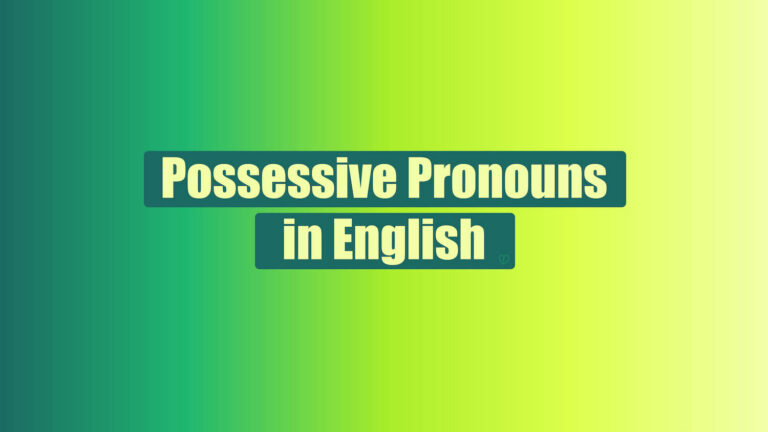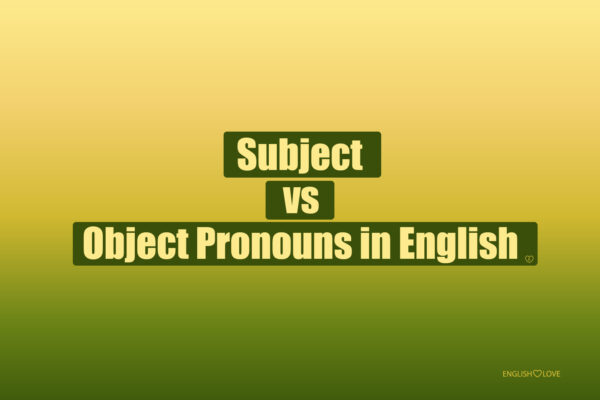Possessive pronouns play a crucial role in the English language, allowing us to indicate ownership or possession without repeating the noun. This article delves deep into the world of possessive pronouns, ensuring that you grasp their significance and use them correctly in your sentences.
What is a Possessive Pronoun?
A possessive pronoun is a subtype of pronouns used in the English language to indicate ownership or possession without the need to specify the actual noun. These pronouns help in avoiding redundancy and make sentences more concise. For instance, instead of saying “I have lost the keys of my car,” you can simplify it to “I have lost the keys to mine.”
The primary function of possessive pronouns is to replace a noun phrase, thereby eliminating the need to repeat the noun. For example, in the sentence “Sarah’s book is on the table, and mine is on the shelf,” the possessive pronoun “mine” replaces the need to say “my book.”
Possessive pronouns are unique because they can stand alone, without the need for a noun to follow them. This distinguishes them from possessive adjectives like “my,” “your,” or “our,” which always precede a noun. For instance, while you can say “That is my book,” with “my” being a possessive adjective, you can also say “That book is mine,” with “mine” being a possessive pronoun.
Furthermore, possessive pronouns are versatile and can refer to both tangible items like books, cars, and houses, as well as intangible concepts such as ideas, feelings, or rights. For example, “The original idea was mine” or “The responsibility is yours.”
In essence, mastering the use of possessive pronouns can greatly enhance the fluency and clarity of your communication in English, making your sentences more streamlined and precise.
Examples of Possessive Pronouns in English
There’s a variety of possessive pronouns in English, such as “yours,” “mine,” “his,” “hers,” “theirs,” “ours,” and “its.” These pronouns can represent ownership of people, animals, objects, or ideas. For instance, you can say, “That car is yours” or “This book is mine.”
List of Common Possessive Pronouns
- Mine
- Yours
- His
- Hers
- Its
- Ours
- Theirs
Each of these pronouns can replace nouns in different contexts to show ownership or possession.
Difference between Possessive Pronouns and Possessive Adjectives
It’s essential to differentiate between possessive pronouns and possessive adjectives. While the former replaces the noun entirely, the latter is used before a noun to indicate ownership. For instance, “That is her book” uses a possessive adjective, while “That book is hers” uses a possessive pronoun.
How to Use Possessive Pronouns in Sentences
Using possessive pronouns is straightforward. They replace noun phrases that indicate ownership. For example, “This is my car” can be rephrased as “This car is mine.” However, it’s vital to choose the correct possessive pronoun based on the sentence’s context.
Common Mistakes with Possessive Pronouns
A frequent error is using an apostrophe before the “s” in possessive forms. For instance, “it’s” is a contraction of “it is,” whereas “its” is a possessive pronoun. Another common mistake is using the wrong possessive pronoun, like “my” instead of “mine.”
| Incorrect Form | Correct Form | Explanation |
|---|---|---|
| it’s | its | “it’s” is a contraction for “it is” or “it has.” “its” is the possessive form. |
| your’s | yours | Possessive pronouns don’t require an apostrophe. |
| their’s | theirs | Similar to “your’s,” “their’s” is incorrect because possessive pronouns don’t need an apostrophe. |
| our’s | ours | “our’s” is not a word in English. The correct form is “ours.” |
| her’s | hers | “her’s” is incorrect. The right possessive pronoun is “hers.” |
| my | mine | While both are possessive, “my” is an adjective and needs a noun after it. “Mine” is a pronoun and can stand alone. |
| his’s | his | “his’s” is not a word. “His” serves as both a possessive adjective and a possessive pronoun. |
Summary
Possessive pronouns are integral to English grammar, helping convey ownership or possession effectively. By understanding the distinction between possessive pronouns and possessive adjectives and using them correctly, you can communicate more clearly and improve your English proficiency. Keep practicing, and you’ll become more adept at using them in your conversations. Best of luck on your English learning journey!
FAQ about Possessive Pronouns in English
What is the main purpose of possessive pronouns in English?
Possessive pronouns in English indicate ownership or possession without specifying the actual noun. They help avoid redundancy and make sentences more concise.
How do possessive pronouns differ from possessive adjectives?
Possessive pronouns can stand alone without a following noun, whereas possessive adjectives always precede a noun. For instance, in The book is mine, mine is a possessive pronoun, while in That is my book, my is a possessive adjective.
What are common mistakes made with possessive pronouns?
Common mistakes include using an apostrophe before the s in possessive forms (e.g., your’s instead of yours) and confusing possessive adjectives with possessive pronouns (e.g., my instead of mine).
Can possessive pronouns refer to intangible concepts?
Yes, possessive pronouns can refer to tangible items like books and cars as well as intangible concepts such as ideas, feelings, or rights. Examples include The original idea was mine or The responsibility is yours.




